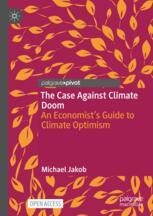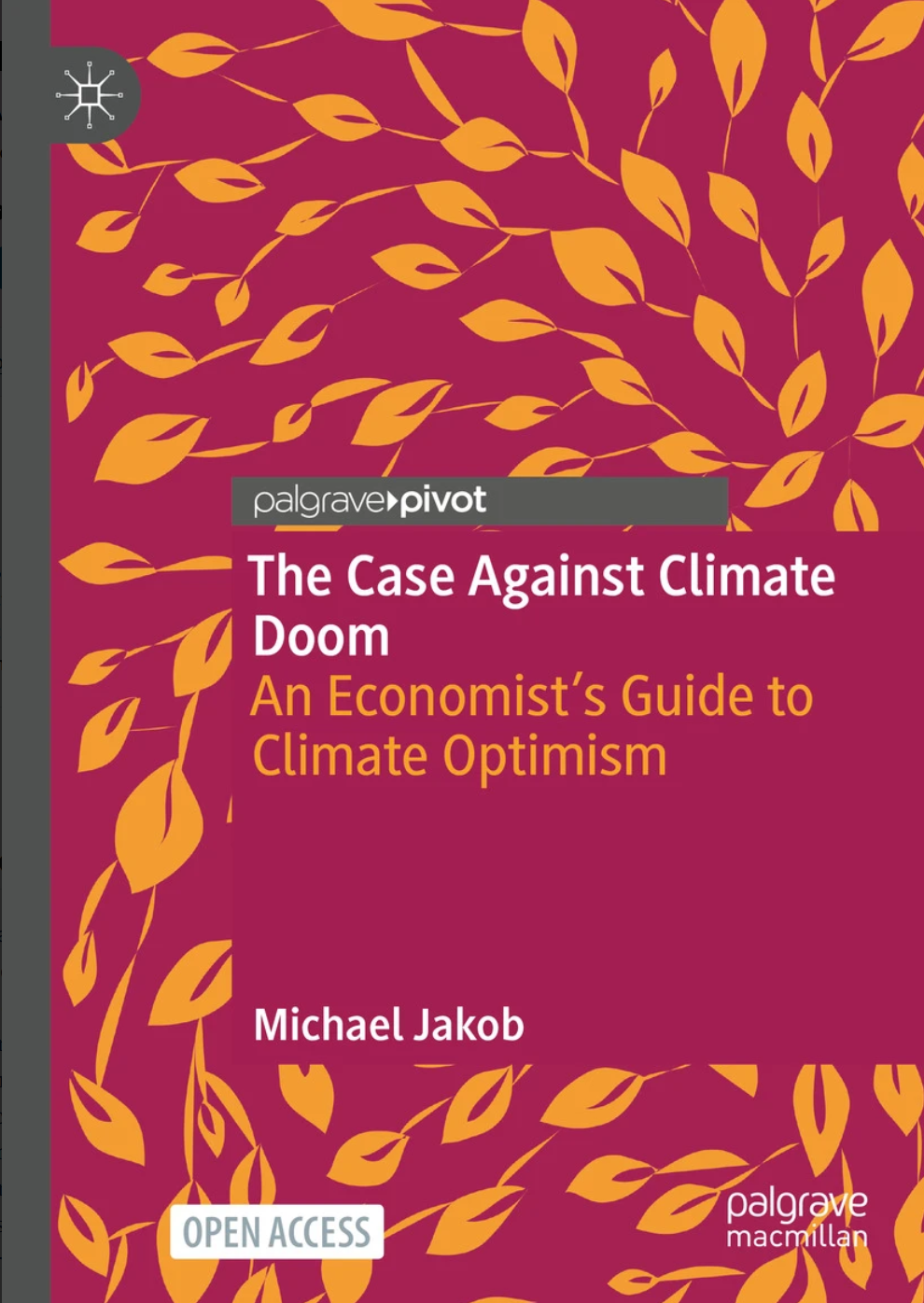Behind the Book: The Case Against Climate Doom. An Economist’s Guide to Climate Optimism.
Published in Earth & Environment and Economics
Explore the Research

The Case Against Climate Doom
This open access book provides hope against climate pessimism and outline practical ways to combat climate change.
I had the initial idea to write this book (available here) in 2023, when I realized that more and more people were claiming that it is already too late to take meaningful action against climate change. Being concerned that such ‘climate doomism’ might lead to complacency and make people reluctant to engage in climate change mitigation and adaptation. Instead, I set out to shift the perspective away from all the setbacks and problems confronting climate policy and look for developments that have gone in the right direction. I believe that such encouraging developments also contain valuable insights on how we can make more progress in areas that are so far lagging behind. The book presents a concise overview of many key developments that are relevant for climate change mitigation and adaptation.
My aim was to provide a wealth of facts and figures in a way that is easy accessible for a broad readership. The book presents 30 examples of social, political and technological progress that pave the way for successful climate change mitigation and adaptation (such as rising awareness of climate change around the globe, rising deployment of climate policies and declining costs of clean energy technologies). Each of these 30 cases can be read as a stand-alone, which – together with many graphical elements –makes the book accessible for readers with very limited time. I have also included a list of almost 500 references for readers who wish to dig deeper into certain topics. The book is open access so that everyone – regardless of their financial situation – can have the opportunity to read it and make up their mind about how we can successfully address climate change.
Even though I had already been well aware of many positive developments that have taken place in recent years, I was nevertheless surprised to see how far we have already advanced toward climate neutrality in some areas – especially with regard to key technologies, such as renewable energy sources, storage technologies, heat pumps and electric vehicles. It was encouraging for me to realize that many of these technologies may already be cheaper and better than conventional ones. This makes me optimistic that they will survive the heavy roll-back of climate action in the US and the declining commitment to climate policy in the EU.
Technological progress alone is not sufficient to solve the climate challenge, but it will make it easier for people to switch to climate-friendly solutions and for policy makers to implement measures to reduce emissions. And every little progress in one area helps to unlock progress in others, so that the transition to climate neutrality may soon accelerate quite a bit. This is facilitated by growing concern and knowledge among the population, which propels people to adopt more climate-friendly lifestyles and engage in political action. I also find it encouraging that climate issues have become an important topic outside the environment community, as many people have grasped the importance of a clean energy transition for job creation, ambient air quality, and lowering dependence on fossil fuel imports. In a similar vein, climate policy is not restricted to industrialized countries anymore. Rather, low- and middle-income countries increasingly formulate climate targets and devise measures to achieve them.
I have written this book first and foremost to encourage others to keep up – or even increase – their efforts to address climate change. Yet, it also has helped to boost my own motivation to carry on with my academic research and to keep advising policy makers. That is, I have convinced myself that there are good reasons for climate optimism, and I always keep a copy of the book on my desk to counter negative climate news – which are unfortunately still way too frequent. In this spirit, I have dedicated the book to my 7-year-old son Milo, in the hope that he will be able to grow up in a world in which a good life for everyone is possible.


Please sign in or register for FREE
If you are a registered user on Research Communities by Springer Nature, please sign in